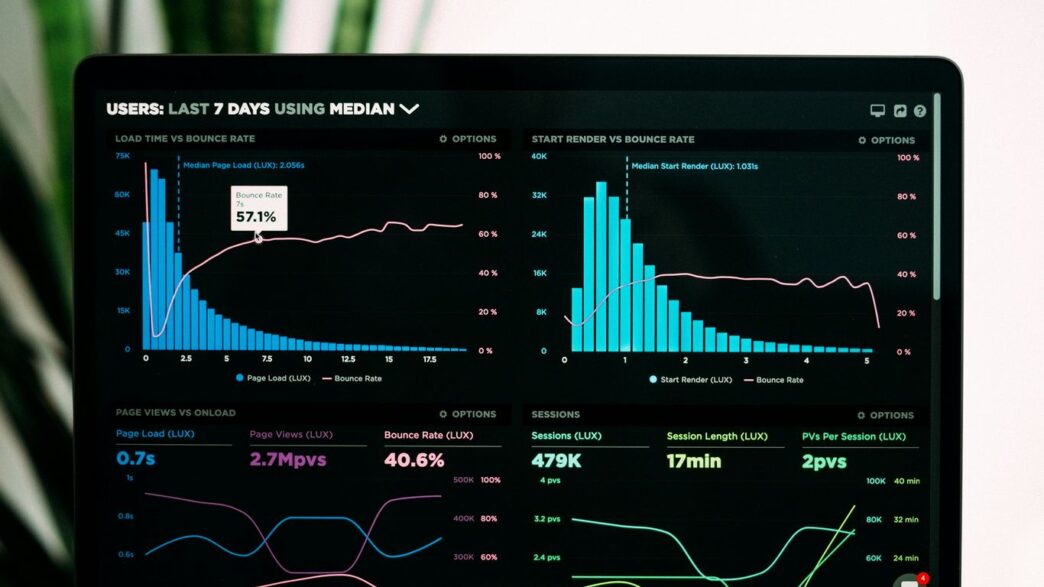Hey there! So, you’ve got a website, and you’re looking for ways to get more people to visit it. We all know about SEO and social media, but there’s another big player in town: referral traffic. It’s basically when someone clicks a link on one website and lands on yours. Think of it like getting a shout-out from another site. It’s a pretty cool way to get new eyes on your stuff without always having to pay for ads. Let’s break down how to get more of it and why it’s actually a big deal for your referral traffic website.
Key Takeaways
- Referral traffic happens when visitors click a link on another website to get to yours, acting like a vote of confidence from another site.
- You can find out where your referral traffic is coming from by looking at tools like Google Analytics, which show you which sites are sending people your way.
- Not all referrals are equal; some sites send visitors who stick around and engage, while others might not. It’s smart to focus on the good ones.
- To get more referral traffic, try things like writing guest posts for other blogs, being active on social media, and getting listed in online directories.
- Making great content that others want to link to, like helpful guides or interesting infographics, is a solid way to attract visitors from other websites.
Understanding Referral Traffic Website Fundamentals
When people talk about getting visitors to a website, they often think about search engines or typing a web address directly. But there’s another big way people find you: through links on other websites. That’s what referral traffic is all about. It’s like getting a recommendation from another site that sends people your way. This kind of traffic is super important because it shows that other parts of the internet find your site worth mentioning. It’s a sign of your site’s reach and how well it’s connected to others online.
Defining Referral Traffic Sources
Referral traffic happens when someone clicks a link on one website and it takes them to yours. The website where they clicked the link is called the ‘referrer.’ Think of it like this:
- Blogs: A blogger writes a post and includes a link to your product or service.
- News Sites: A news article mentions your company and links to your website for more info.
- Online Directories: Your business is listed on a site like Yelp or a niche industry directory, and people click the link to visit you.
- Social Media: While sometimes tracked separately, links shared on platforms like Facebook, Twitter, or LinkedIn can also count as referrals.
Basically, any click from a site that isn’t a search engine (like Google) or a direct visit (typing your URL) falls into this category. It’s a way to see who’s sending people your way besides the usual suspects.
The Importance of Referral Traffic for Websites
Why bother with referral traffic? Well, it’s a pretty big deal for a few reasons. For starters, it helps you get visitors who might not have found you through search engines. These visitors often come with a bit more interest already because someone else thought your site was relevant enough to link to. This can mean they’re more likely to stick around, check out your content, and maybe even become a customer.
Here’s a quick look at why it matters:
- Diversifies Your Traffic: Relying too much on one source, like search engines, can be risky. Referral traffic gives you other avenues to bring people in.
- Builds Credibility: When reputable sites link to you, it’s like a vote of confidence. This can make new visitors trust you more.
- Increases Visibility: More links pointing to your site mean more eyes on your brand, even if those visitors don’t click through immediately.
- Drives Potential Customers: Visitors from relevant sites are often already looking for what you offer, making them good prospects.
Distinguishing Referral Traffic from Other Sources
It’s easy to get referral traffic mixed up with other types of website visitors. Here’s how they’re different:
- Organic Search Traffic: This is when people find you through search engines like Google or Bing. They typed in a keyword, and your site showed up in the results. Referral traffic comes from links on other websites, not search engine results pages.
- Direct Traffic: This is when someone types your website address directly into their browser or uses a bookmark. They know your URL and go straight to you.
- Paid Search Traffic: This is traffic from ads you pay for on search engines (like Google Ads). Referral traffic is typically earned, not paid for directly.
- Social Traffic: Sometimes, analytics tools separate traffic from social media platforms. While social media can be a referral source, it’s often categorized on its own to show the impact of your social media efforts specifically.
Understanding these differences helps you see exactly where your visitors are coming from and how effective different marketing efforts are. It’s all about getting a clear picture of your website’s audience.
Identifying Your Referral Traffic Website Drivers

So, you’ve got this idea that other websites sending people your way is a good thing. And it is! But just knowing that it’s happening isn’t enough. You need to figure out who is sending them and why they’re sending them. It’s like knowing you have friends, but not knowing which ones actually show up when you invite them over.
Navigating Google Analytics for Referral Data
Alright, so the first place to look is your Google Analytics. If you’re not using it, well, you’re kind of flying blind. It’s free, so there’s no excuse, really. Once you’re logged in, you’ll want to find the ‘Acquisition’ section, and then click on ‘All Traffic,’ and finally, ‘Referrals.’ This is where the magic happens, or at least, where the data shows up.
You’ll see a list of websites that have linked to yours. It’s not just a list, though. You get to see how many people each site sent over. This is your starting point for figuring out who your referral buddies are.
Here’s a quick look at what you’ll find:
- Referral Domain: The actual website that linked to you.
- Sessions: The number of visits that came from that site.
- Users: The number of unique people who visited from that site.
- Bounce Rate: How many people left your site immediately after arriving from that link.
- Pages/Session: How many pages they looked at on average.
- Avg. Session Duration: How long they stuck around.
Evaluating Referral Source Quality and Engagement
Just because a site sends you a lot of visitors doesn’t mean it’s a good source. Think about it: if a million people show up but they all leave after two seconds and don’t look at anything, that’s not really helpful, is it? You want visitors who are interested in what you have to say or offer.
So, look at those engagement metrics. A low bounce rate and a high ‘Pages/Session’ or ‘Avg. Session Duration’ are good signs. It means the people coming from that site are actually sticking around and exploring. If a site with fewer sessions has much better engagement than a site with tons of sessions, you might want to focus more on the quality source.
Here’s a simple way to think about it:
- High Traffic, Low Engagement: Might be a popular site, but not the right audience for you. Or maybe the link is in a weird spot.
- Low Traffic, High Engagement: This is gold! These are likely highly relevant visitors. You want more of these.
- High Traffic, High Engagement: Jackpot! This is your ideal referral source.
- Low Traffic, Low Engagement: Probably not worth your time unless it’s a new source you’re still testing.
Recognizing High-Value Referral Partnerships
Once you’ve looked at the data, you can start to see which websites are really pulling their weight. These are your high-value partners. They’re not just sending random clicks; they’re sending people who are likely interested in your content or products.
Think about these kinds of sites:
- Industry Blogs: Blogs that talk about topics related to yours often have readers who are already interested in what you do.
- News Outlets or Publications: If a reputable news site or magazine mentions you, that’s a big deal. Their readers trust their recommendations.
- Complementary Businesses: Websites that offer services or products that go well with yours can send you customers who are already in the buying mood.
- Influencers or Review Sites: People who have a following and review products or services in your niche can drive very targeted traffic.
Identifying these sources is the first step. The next is figuring out how to get more from them, which we’ll get into later.
Strategies to Boost Referral Traffic Website Performance
So, you’ve got a website, and you want more people to find it, right? Well, besides people typing your address directly or finding you on Google, there’s this thing called referral traffic. It’s basically when someone clicks a link on another website and lands on yours. Pretty neat, huh? The trick is to get more of those links out there. Here are a few ways to make that happen.
Leveraging Guest Blogging for Backlinks
Think of guest blogging as visiting a friend’s house and leaving a little calling card. You write a post for another website in your niche, and in return, you get to include a link back to your own site. It’s a win-win. They get fresh content, and you get a direct line to their readers. The more reputable the site you guest post on, the more likely their readers are to trust your link. When you’re writing, make sure the content is genuinely useful and relevant to that site’s audience. Don’t just stuff it with links; that looks spammy. A well-placed link within helpful content is way more effective.
Here’s a quick rundown:
- Find the right blogs: Look for sites that your target audience already reads. Check their content and see if it aligns with what you do.
- Pitch a great idea: Don’t just say ‘I want to write for you.’ Propose a specific topic that you know will interest their readers.
- Write your best work: Make your guest post so good that people want to click through to learn more.
- Include a natural link: Place your link where it makes sense, usually in your author bio or within the body of the post if it adds value.
Optimizing Social Media for Referral Links
Social media isn’t just for sharing cat videos (though those are important too). It’s a goldmine for referral traffic if you play it right. When you share your blog posts, articles, or product pages, make sure you’re including a clear link. Don’t just drop a link and walk away. Engage with people who comment or share. Ask questions to spark conversation. Sometimes, a simple, well-timed post with a compelling image and a direct link can bring a surprising number of visitors.
Consider these points:
- Tailor your posts: What works on Twitter might not work on LinkedIn. Adapt your message for each platform.
- Use visuals: Posts with images or videos tend to get more attention. Make sure your visuals are relevant and eye-catching.
- Be consistent: Regularly sharing content keeps your audience engaged and reminds them you’re there.
- Encourage sharing: Ask your followers to share your content if they find it useful. Word-of-mouth is powerful, even online.
Engaging in Online Directories and Listings
This might seem a bit old-school, but online directories and industry-specific listings can still be a solid source of referral traffic. Think of them like the Yellow Pages, but for the internet. If people are looking for services or products like yours, and they search within a relevant directory, you want your business to show up. Make sure your listing is complete, accurate, and includes a link back to your website. This is especially true for review sites; positive reviews can drive a lot of curious visitors your way.
Here’s what to focus on:
- Identify relevant directories: Don’t just list yourself everywhere. Find the directories that your potential customers actually use.
- Complete your profile: Fill out every section. The more information you provide, the more helpful your listing will be.
- Keep it updated: If your business hours or contact information change, update your listings immediately.
- Encourage reviews: Positive reviews on these platforms can significantly boost your credibility and attract more clicks.
Content as a Magnet for Referral Traffic Website Growth

Think of your website’s content as a really good story or a helpful guide. People don’t just link to anything, right? They link to stuff that’s interesting, useful, or makes them look good. So, if you want other sites to send their visitors your way, you’ve got to give them something worth linking to. It’s not just about writing; it’s about creating things that naturally attract attention and make others want to share.
Creating Shareable and Valuable Content
This is where you really shine. What can you create that people will actually want to talk about and link to? It’s not always obvious, but here are some ideas:
- In-depth guides: Think of a topic in your niche that people often struggle with. Write a super detailed guide that answers all their questions. Make it the go-to resource.
- Original research or data: Did you run a survey? Did you collect some interesting stats? Sharing this kind of unique information is gold for other bloggers and news sites.
- How-to articles with visuals: People love learning how to do things. If you can show them step-by-step, with clear pictures or even short videos, that’s incredibly shareable.
- Opinion pieces or trend analysis: If you have a strong, well-reasoned take on something happening in your industry, people will link to it to agree, disagree, or start a discussion.
The more useful and unique your content is, the more likely other websites will see it as a valuable resource to link to.
Tailoring Content to Referral Audience Interests
It’s not enough to just create good content; you need to think about who will be linking to it and who they’re sending over. If a popular industry blog links to your article, their readers are probably already interested in that topic. So, make sure your content speaks directly to what they’re looking for.
- Understand the linking site’s audience: What kind of content do they usually share? What problems do their readers have?
- Use their language: If the linking site uses certain terms or has a particular tone, try to match that in your content where it makes sense. It shows you understand their world.
- Address specific pain points: Instead of general advice, get specific. If a site about small business marketing links to you, write about a challenge that small business owners face.
Utilizing Infographics and Visual Content
Let’s be honest, a wall of text can be a bit much sometimes. Visuals break things up and make information easier to digest. Infographics are fantastic for this because they pack a lot of data into an easy-to-understand graphic.
Here’s why they work so well for referrals:
- Highly shareable: People love sharing cool-looking infographics on social media and blogs.
- Easy to understand: Complex data becomes simple when presented visually.
- Attracts links: Other websites can embed your infographic on their own pages, usually with a link back to your site. It’s a win-win.
| Content Type | Link Potential | Shareability | Ease of Creation |
|---|---|---|---|
| In-depth Guide | High | Medium | Medium |
| Original Research | Very High | Medium | High |
| How-to Article | Medium | High | Medium |
| Infographic | High | Very High | High |
| Opinion Piece | Medium | Medium | Low |
Creating these kinds of assets takes effort, but when done right, they become powerful tools for bringing new eyes to your website without you having to constantly chase after links.
Cultivating Relationships for Enhanced Referral Traffic
Getting people to link to your site from theirs isn’t just about having good content, though that’s a big part of it. It’s also about building connections. Think of it like networking in real life – you meet people, you help them out, and they might help you back. The internet works similarly, but with links instead of handshakes.
Collaborating with Influential Bloggers
Reaching out to bloggers who already have a following in your niche can be a smart move. It’s not about asking for a favor, but about finding ways to work together. Maybe you can offer them some exclusive information for their readers, or perhaps you have a unique perspective they’d like to feature. The goal is to make it a win-win situation. If a blogger writes about your product or service, and their readers find it useful, they’ll click the link. It’s that simple.
Here’s a quick look at how to approach this:
- Find the right fit: Look for bloggers whose audience matches yours. Don’t just go for the biggest names; look for those with engaged readers.
- Offer value first: Before asking for anything, see if you can contribute something useful to their blog or audience. This could be a guest post, an interview, or even just a helpful comment.
- Be clear and direct: When you do reach out, explain what you’re proposing and why it would benefit their readers. Keep it short and to the point.
Building Partnerships with Complementary Websites
Sometimes, the best referral traffic comes from websites that aren’t direct competitors but serve a similar audience. For example, if you sell hiking gear, a website that reviews national parks or offers travel tips for outdoor adventures would be a great partner. You can explore ideas like:
- Cross-promotion: Mention each other’s services or products in your newsletters or on your social media.
- Joint content creation: Work together on a blog post, a guide, or even a webinar that appeals to both your audiences.
- Affiliate programs: If it makes sense, you could set up a system where partners earn a small commission for sending customers your way.
This kind of collaboration helps both sites grow by tapping into each other’s established audiences.
Active Engagement on Industry Forums
Online forums and communities can be goldmines for referral traffic, but you have to participate authentically. Don’t just drop links and run. Instead, become a helpful member of the community.
- Answer questions: Share your knowledge and help others solve their problems. This builds trust and positions you as an authority.
- Join discussions: Offer thoughtful insights and engage in conversations. Show that you’re a real person interested in the topic.
- Link strategically: When it’s genuinely relevant and adds value to the discussion, you can include a link to a resource on your site. Make sure your forum profile also has a link back to your website.
People are more likely to click on a link from someone they see as helpful and knowledgeable, rather than someone just trying to promote themselves.
Optimizing User Experience for Referral Traffic Website Success
So, you’ve got people clicking over from other sites – that’s awesome! But what happens when they land on yours? If the experience isn’t great, they’ll bounce right back. Making sure your website is easy and pleasant to use is key to keeping those referral visitors around. It’s not just about getting them there; it’s about making them want to stay and explore.
Ensuring Website Mobile-Friendliness
Think about how many people browse on their phones these days. If your site looks wonky or is a pain to use on a small screen, you’re losing a huge chunk of potential visitors. Mobile-friendliness isn’t a nice-to-have anymore; it’s a must. This means your text should be readable without zooming, buttons should be easy to tap, and the whole layout should just make sense on any device.
Improving Landing Page Relevance
When someone clicks a link from, say, a gardening blog to your site about rare plants, they expect to see something about rare plants, right? If they land on your homepage and have to hunt around, they’ll probably leave. Your landing pages need to directly match what the visitor was expecting. This might mean creating specific pages for different types of referrals. For example, if a popular tech review site links to your new gadget, send them to a page all about that gadget, not just your main product list. This direct connection makes them feel understood and more likely to stick around. You can check out how different referral sources perform to see if your landing pages are hitting the mark for referral traffic.
Streamlining User Navigation and Calls-to-Action
Once they’re on your site, how easy is it for them to find what they need? Clunky menus or confusing layouts will frustrate anyone. Think about a clear path for visitors. What do you want them to do next? Whether it’s reading another article, signing up for a newsletter, or checking out a product, make the next step obvious. These ‘calls-to-action’ (CTAs) should be clear and inviting. A well-organized site with obvious next steps helps turn curious visitors into engaged users.
Here’s a quick checklist:
- Navigation: Is your main menu easy to find and understand?
- Links: Do internal links make sense and lead where expected?
- CTAs: Are your buttons or links for the next action clear and compelling?
- Forms: If you have forms, are they simple and not too long?
- Loading Speed: Does your site load quickly, especially on mobile?
Wrapping Things Up
So, we’ve talked about what referral traffic is and why it’s a pretty big deal for getting more eyes on your website. It’s not just about getting random clicks; it’s about people coming over from places they already trust. We went through a bunch of ways to get more of this good traffic, like getting listed in directories, writing guest posts, and just being active online where your potential visitors hang out. Remember, it takes a bit of effort, but building these connections and getting links from other sites can really make a difference. Keep an eye on where your traffic is coming from, and focus on the sources that bring in the most interested people. It’s a solid way to grow your online presence without always relying on paid ads or hoping for the best with search engines.
Frequently Asked Questions
What exactly is referral traffic?
Referral traffic is when people visit your website after clicking on a link from another website, not from a search engine like Google. Think of it like someone reading a magazine article that mentions a cool store, and then they go to that store. The magazine is the ‘referrer’ sending them over.
Why is referral traffic so important for my website?
It’s important because it shows that other websites find your content or business valuable enough to share with their own visitors. This can bring in new people who are already interested in what you offer, and it can also help your website rank better in search results because search engines see these links as votes of confidence.
How can I find out where my referral traffic is coming from?
You can use tools like Google Analytics. It’s like a report card for your website. You can look in the ‘Acquisition’ or ‘Traffic’ section, and there will be a report specifically for ‘Referral’ traffic. This report will show you a list of all the websites that have sent visitors to yours.
Are all referral sources equally good?
Not at all! Some websites might send a lot of visitors, but those visitors might leave your site right away. Others might send fewer visitors, but those visitors might spend more time on your site and even buy something. It’s important to check things like how long people stay and if they take any actions, like signing up for something.
What’s a good way to get more referral traffic?
One popular method is ‘guest blogging.’ This means writing an article for another website in your field and including a link back to your own site. Sharing your content on social media, getting listed in online directories, and even commenting on other blogs can also help.
How does creating good content help with referral traffic?
When you create really interesting, useful, or fun content – like guides, cool pictures (infographics), or videos – other websites and people are more likely to want to link to it or share it. This naturally brings more visitors to your site from those links.














